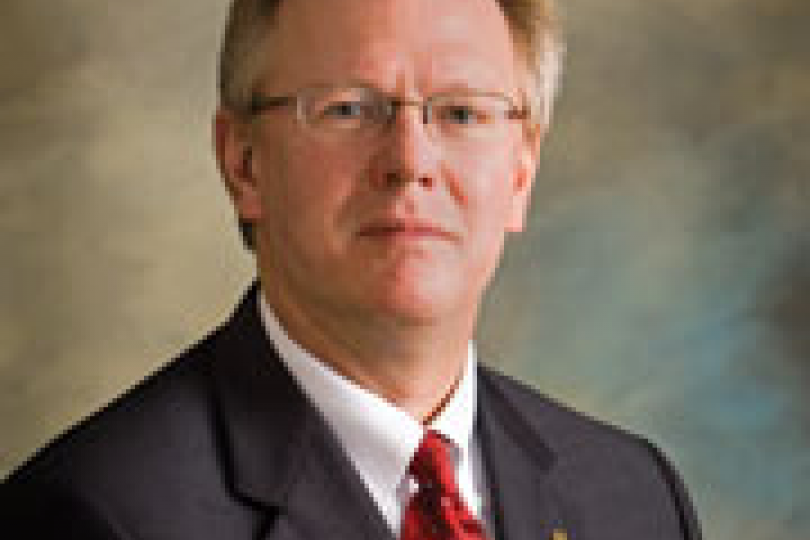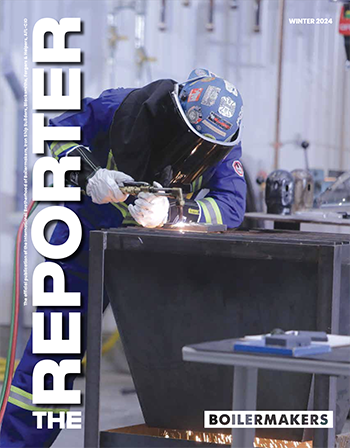Boilermakers, other unions are proposing a new framework
IN SEPTEMBER, I joined with the general presidents of other unions in submitting a joint letter to U.S. EPA Administrator Scott Pruitt proposing a sensible alternative to the overreaching, job-killing, industry-disrupting Clean Power Plan.
The CPP was President Obama’s signature response to climate change, but it was deeply flawed and faced numerous legal challenges. The rule was so egregious that the Supreme Court issued a stay in February of 2016 freezing its implementation even before a lower court could decide on its legality. That was an unprecedented action by the high court.
Without rehashing the debate over the CPP and its many flaws, it can be said that the rule would have strangled the coal mining industry and the coal-fired power generation industry through heavy-handed regulations that, many believe, violated states’ rights and misinterpreted the Clean Air Act (the law that regulates airborne pollution).
Even the threat of implementing the CPP hastened decisions by some power companies to curtail coal as an energy source. This has impacted union jobs not just in power generation but also in mining, rail transportation and construction.
“Even the threat of implementing the CPP hastened decisions by some power companies to curtail coal as an energy source.”
With President Trump’s appointment of Administrator Pruitt, the EPA is now considering an alternative approach to the CPP. The Boilermakers and other unions signatory to the letter to Pruitt believe such an alternative could offer an opportunity to address carbon dioxide emissions without unnecessarily and unfairly harming industries that rely on coal.
Proposal would allow states more control, flexibility
TO ADDRESS CO2 emissions effectively and without excessive industry disruption, a regulatory framework replacing the CPP should provide the states with better guidance, but fewer mandates, in establishing performance standards. Those standards should consider each state’s specific circumstances, energy markets and the differences in Electricity Generation Unit (EGU) age, design, siting and other characteristics.
The framework should also unshackle power generators from onerous government permitting requirements known as “New Source Review.” NSR makes it expensive and uncertain to upgrade EGUs with technologies for emission reduction and other improvements. Yet those very upgrades are necessary to cut emissions and modernize facilities. In effect, NSR discourages emission reduction efforts.
Our letter to Administrator Pruitt offers recommendations aimed at reducing CO2 emissions in a way that neither intrudes on states’ rights nor runs afoul of the Clean Air Act. These recommendations, excerpted from the letter, are listed below.
- The proposed framework strictly adheres to the statutory requirements for regulating existing sources under section 111(d) of the Clean Air Act (CAA). These requirements give states the primary role in regulating CO2 emissions from existing EGUs through the establishment of CO2 performance standards.
- Section 111(d) of the CAA limits EPA’s role to establishing a “procedure” for states to submit a plan for the establishment of CO2 performance standards for existing EGUs. Section 111(d) provides states with primary responsibility for developing performance standards for EGUs in accordance with the “procedure” established by EPA.
- Each state should have wide latitude to develop a plan that fits its individual circumstances and priorities. While EPA is responsible for determining the Best System of Emission Reduction (BSER) for source categories, EPA cannot dictate what a state must include or how a state must regulate sources within its jurisdiction. States should have authority to establish source-specific standards based on a variety of factors, including the remaining useful life of the unit, unreasonable cost of control, and physical impossibility of installing emissions control equipment.
- EPA should establish a federal/state regulatory process establishing general procedures for states to follow in regulating CO2 emissions from affected EGUs. These procedures would require each state to set CO2 performance standards for each affected EGU based on sitespecific factors. The form of the performance standards could be set, for example, as a range of CO2 emissions rate limits for units subcategorized by boiler and coal type, as an “operational standard” that describes the efficiency and maintenance measures (either physical or operational) that should be performed to limit CO2 emissions from the affected unit, or some combination of these approaches.
- To assist states in setting such unit-specific performance standards, EPA should develop guidance on how states should account for variability in plant efficiency reflecting factors such as boiler design, coal type, unit age and size, load level, cooling system, and existing pollution controls. The CO2 performance standard states establish for each unit would be deemed to meet the requirements of section 111(d).
- We also believe that the CPP rulemaking provides EPA with an opportunity to revise current New Source Review (NSR) regulations through a parallel rulemaking. NSR reform would enhance the prospects for investments that would create jobs while modernizing the aging coal fleet.
Framework is practical, doable
WHILE THE EPA under President Obama may have had good intentions in creating the CPP, the rule was unfair, intrusive and extremely costly to the states, to industries and to Boilermakers and other union workers. Even though the CPP was not implemented, its existence led to a chilling effect on the continued operation of coal-fired generating units.
We Boilermakers have suffered its impact through fewer job opportunities and lower contributions to our benefit funds. Other labor unions have been impacted similarly. We cannot undo that damage; however, we can work toward a sensible solution, an alternative to the CPP that both addresses the need for reducing emissions while also safeguarding our industries, workers and the economy.
The framework we and our fellow unions have proposed to Administrator Pruitt is practical and doable. We are hopeful that it will be given serious consideration and that we can begin moving forward with a much-improved regulatory plan.
Less red tape, extended tax credits could boost CCUS
A MORE FLEXIBLE regulatory framework coupled with improved government incentives for containing CO2 could boost the power industry’s appetite for carbon capture, storage and use technology. CCUS is critical to meet global goals for holding climate change temperatures in check. And promising research indicates that waste CO2 may be used profitably as a feedstock for fertilizers, polycarbonates and other products.
As this column is being written, a bipartisan effort is under way in Congress (the FUTURE Act) that would greatly incentivize CCUS development and application by raising the tax credit across-the-board to $35 per metric ton of CO2 stored in geologic formations or used in enhanced oil recovery. Existing credits stand at $20 and $10, respectively, and are not sufficient to spur investment in CCUS. The act would include other inducements, such as extending the term that credits are available.
A much-improved regulatory environment coupled with passage of the FUTURE Act would encourage more investment in fossil fuels and the technologies to dramatically reduce CO2 emissions.
That would be a win for the power industry (and other industries that are heavy CO2 emitters), a win for workers and a win for the environment.






